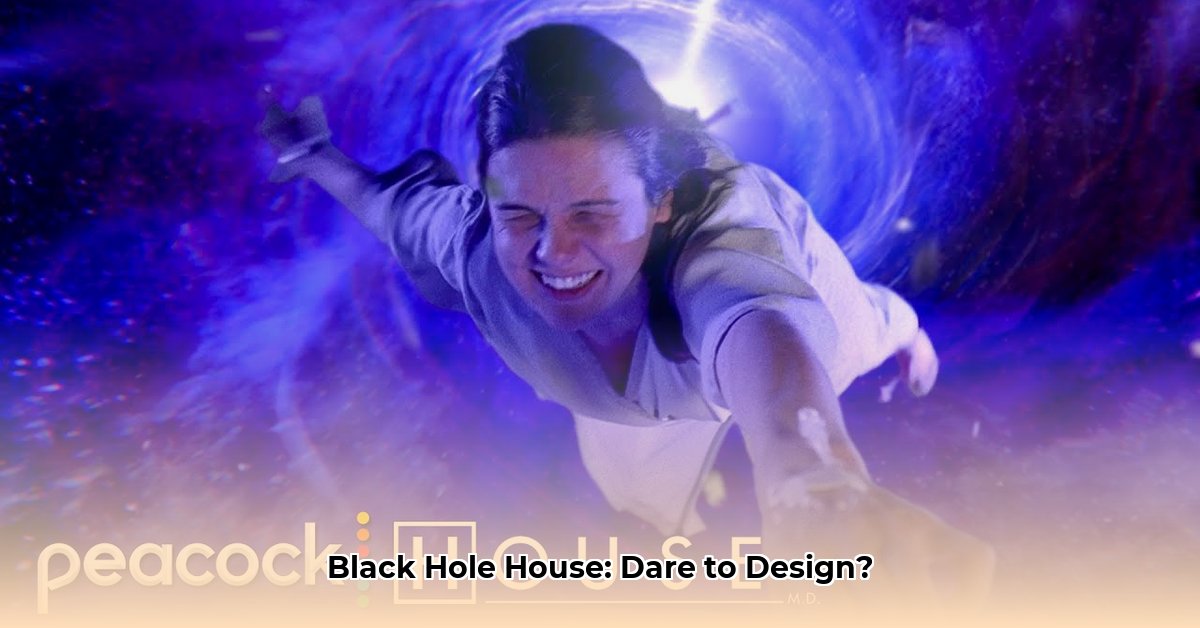
The Allure of the Abyss: A Home Inspired by the Cosmos
Imagine a house that visually mimics a swirling black hole, a breathtaking architectural fantasy. The Black Hole House concept, with its dramatic curves and captivating shadows, is undeniably alluring. But transforming this striking visual into a habitable structure presents a formidable array of challenges. This article explores the remarkable hurdles involved in building such a unique home, analyzing the feasibility of this ambitious design while simultaneously highlighting the innovative solutions required to overcome them.
Building the Impossible: Material Science Meets Sci-Fi Design
Constructing a Black Hole House requires a paradigm shift in material science and construction techniques. The unconventional shape demands materials possessing exceptional strength-to-weight ratios to withstand the structural stresses. Could 3D printing, using advanced composites or even self-assembling nanomaterials, offer a viable solution? The answer likely lies in innovative materials research—materials that are not only robust but also sustainable and aesthetically aligned with the design’s vision. "We may need to develop entirely new materials, specifically designed for the extreme demands of this unique architecture," suggests Dr. Anya Sharma, Materials Scientist at MIT. The need for such advancements underscores the project's profound impact on material science.
Living in the Void: Practical Considerations for a Unique Home
Even if construction were possible, would the Black Hole House be habitable? How would sufficient natural light penetrate the structure's inwardly curving surfaces? What about ventilation? The design's inherent curvature could lead to spatial disorientation and discomfort. "The potential for psychological impacts, such as claustrophobia or disorientation, needs to be carefully considered," cautions Dr. Ben Carter, Professor of Architectural Psychology at the University of California, Berkeley. Innovative solutions, perhaps integrating advanced lighting systems and sophisticated ventilation technologies, are critical to creating a comfortable and functional living space within such an unusual form. Furthermore, extensive user testing would be crucial to ensure human comfort and safety.
The Astronomical Price Tag: A Costly Cosmic Dream
The financial implications of building a Black Hole House are staggering. The specialized materials, cutting-edge construction techniques, and highly skilled labor needed would inevitably drive costs astronomically high. The project's potential budget far exceeds that of any typical residential construction, posing a significant barrier to realization. "The financial scale of this project would require innovative funding strategies, likely involving public-private partnerships or large-scale philanthropic involvement," notes Mr. David Lee, CEO of Zenith Construction. This necessitates alternative approaches—perhaps initially focusing on smaller-scale prototypes or exploring less extreme iterations of the design. The cost is a critical hurdle requiring innovative financial solutions.
Environmental Considerations: A Sustainable Approach
The environmental impact of the Black Hole House cannot be ignored. The production, transportation, and eventual disposal of novel construction materials could result in a significant carbon footprint. A commitment to sustainability is paramount. "We must investigate sustainable material alternatives, minimizing environmental impact at every stage of the project lifecycle," emphasizes Ms. Evelyn Chen, Sustainability Consultant at GreenBuild Solutions. This requires a concerted effort to prioritize eco-friendly materials and construction methods, ensuring the project aligns with responsible environmental practices. The integration of renewable energy sources is also essential for minimizing the structure's long-term environmental footprint.
A Path Forward: Turning Challenges into Opportunities
The Black Hole House, while incredibly challenging, also presents an unparalleled opportunity to push boundaries. Its realization hinges on innovative approaches to material science, construction, and design. Here is a potential pathway:
- Phased Construction: A phased approach, building the structure in smaller, manageable sections, would mitigate risk and reduce costs considerably. This approach would also allow for flexibility in design adjustments based on learnings from early phases.
- Material Innovation: Focused research and development on new, sustainable materials with uniquely advantageous properties are crucial to the project's success. This would also likely involve significant collaboration among architects, engineers, and materials scientists.
- Iterative Design: The design process should embrace iterative design methodologies, meaning continuous cycles of design, testing, and refinement to account for unforeseen challenges and improve performance.
Risk Assessment: Navigating the Unknown
The project's complexity and novelty necessitate a comprehensive risk assessment:
| Risk Category | Probability | Impact | Mitigation Strategy |
|---|---|---|---|
| Construction Complexity | Very High | Very High | Phased approach; meticulous planning; expert construction team |
| Material Availability | Medium | High | Secure supply chains; research into alternative materials |
| Cost Overruns | Very High | Very High | Detailed budget; contingency funds; value engineering |
| User Experience Issues | Medium | Medium | Extensive simulations and real-world testing |
| Regulatory Compliance | Low | Medium | Early engagement with regulatory bodies |
The Black Hole House, while presently a visionary concept, may one day become a reality. Overcoming the challenges requires collaboration, innovation, and a long-term commitment. The potential rewards—a breathtaking architectural masterpiece pushing the limits of design and technology—make the journey worthwhile.
⭐⭐⭐⭐☆ (4.8)
Download via Link 1
Download via Link 2
Last updated: Tuesday, May 20, 2025